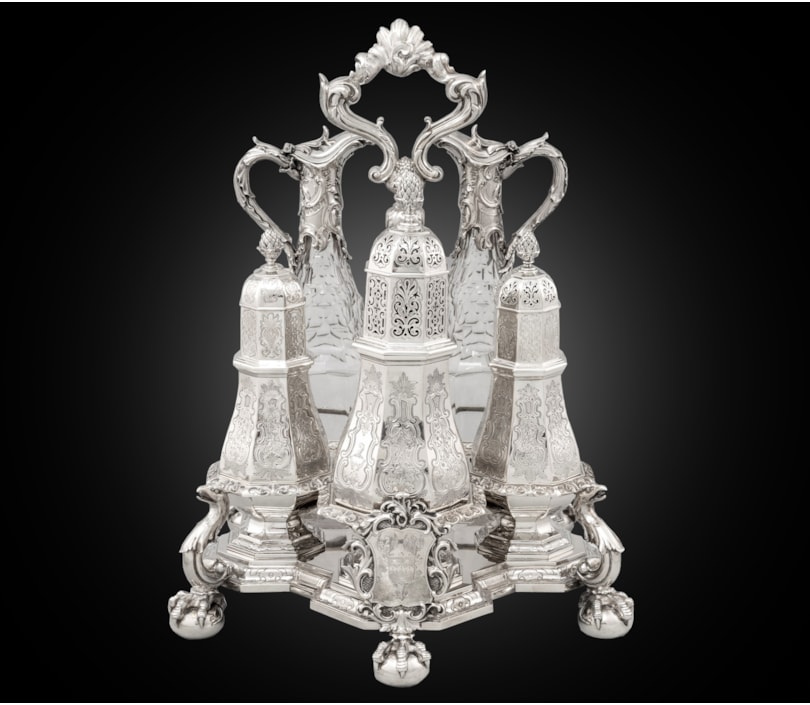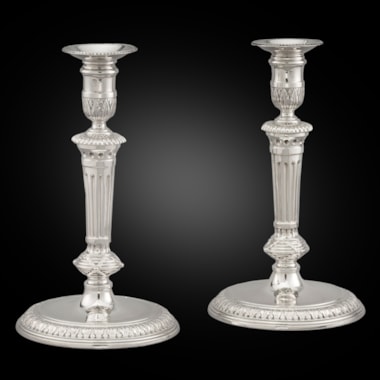The shaped angular frame rests of four ball and claw feet, the rims decorated with chased bands. The five compartments are supported on eagles’ head brackets, and applied with a cartouche surrounded by scrolls and engraved with a coat of arms, with a central shell and scroll handle on baluster support. The three octagonal balusters casters (one large and two small) are chased with panels containing scrolls and flowers, with pineapple finials; the two faceted cut glass bottles have scrolling neck mounts and handles chased with scrolls and foliage, with hinged covers. The casters and bottles are engraved with a crest and motto quoting ‘utcunque placuerit deo’ meaning ‘Asit shall please God’ . The base stamped: PAYNE & SONS BATH
The name ‘Warwick’ for a cruet set derives from the cruet made by Anthony Nelme in 1715 for the Earl of Warwick which comprised three castors and two glass bottles. Later, especially during the 19th Century, the number of bottles grew considerably.
Francis Darby was part of the Quaker Family of Derby who established themselves in the early years of the eighteenth century in Coalbrookdale and who was to play such a significant part in the development of the iron industry in Britain during the eighteenth and nineteenth centuries. He was the eldest son of Abraham Darby III who was responsible, together with John Wilkinson, for the design and construction of the revolutionary Iron Bridge over the River Severn at Coalbrookdale. Darby lost his father at the age of six but went on to become a partner in the Coalbrookedale Company although he did not play an active part in the day to day running of the company which fell to his cousins Abraham IV and Alfred. Despite his Quaker background he had a love for paintings and ‘high art’ and was responsible for the decision to manufacture fine art castings for decorative pieces rather than purely industrial objects. This allowed the company to produce relatively cheap gates, railings and cast-iron furniture which would have been expensive if manufactured in bronze. The company made the sixty-foot-wide ornamental gates for the 1851 Great Exhibition as well as a thirty-foot-wide cast iron dome and a statue of Andromeda which was purchased by Queen Victoria. The gates to Kensington Gardens, close to the Albert Memorial were made by Coalbrookdale.
The Flamboyance of Francis Darby’s character and his love of art are reflected in this object which with its massive proportions and robust chasing exudes confidence and grandeur.
Francis Derby (1783-1850).
Sale, Christie’s New York, 5th October 1979, lot 191
Sale, Christie’s London, 15th July 1998, lot 152
Bonhams London, Fine Decorative Arts, 1200-1900, 18 December 2020
Bonhams London, Home & Interiors, 29-30 March 2022
You May Also Like








































































